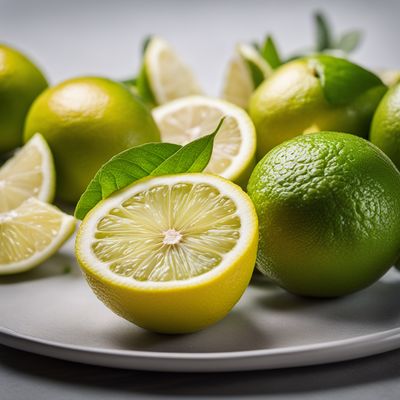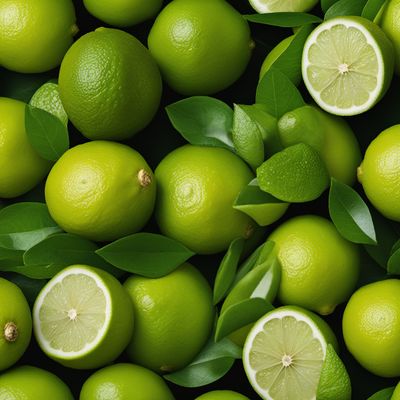
Ingredient
Limes
The Zesty Citrus: Limes
Limes are small, round citrus fruits with a bright green color. They have a thin, smooth skin and a juicy flesh. Limes are known for their tangy and acidic taste, which can vary in intensity depending on the variety. They are commonly used for their juice, zest, or as a garnish.
Origins and history
Limes are believed to have originated in Southeast Asia, specifically in the region encompassing India, Myanmar, and Malaysia. They have a long history of cultivation and have been used in various cuisines around the world for centuries. Limes were introduced to Europe by Arab traders during the Middle Ages and were later brought to the Americas by Christopher Columbus.
Nutritional information
Limes are a good source of vitamin C, a powerful antioxidant that supports the immune system and promotes collagen production. They also contain small amounts of other vitamins and minerals, including potassium and folate. Limes are low in calories and carbohydrates, making them a healthy addition to various recipes.
Allergens
There are no known allergens associated with limes.
How to select
When selecting limes, choose fruits that are firm and heavy for their size. Avoid limes that have soft spots, blemishes, or mold. The skin should be smooth and vibrant green. Limes that feel light for their size may indicate dryness and less juice content. Opt for organic or locally grown limes whenever possible to support sustainable farming practices.
Storage recommendations
To store limes, keep them at room temperature if they will be used within a few days. For longer storage, place them in a plastic bag and refrigerate. Limes can stay fresh for up to two weeks when stored properly. Before using, rinse the limes under cold water and pat them dry.
How to produce
Limes can be grown in warm climates and are well-suited for backyard cultivation. They require well-drained soil and plenty of sunlight. Limes can be grown from seeds or propagated from cuttings. Regular watering and occasional fertilization are necessary for optimal growth.
Preparation tips
Limes can be used in a variety of ways in the kitchen. They are commonly juiced and used in beverages, dressings, marinades, and desserts. The zest of limes adds a bright and citrusy flavor to dishes. Limes are also a popular garnish for cocktails and seafood dishes.
Substitutions
Lemons can be used as a substitute for limes in most recipes, although the flavor profile will be slightly different. Other suitable substitutes include vinegar, citric acid, or other citrus fruits like oranges or grapefruits.
Culinary uses
Limes are widely used in both sweet and savory dishes. They are a key ingredient in Mexican, Thai, and Vietnamese cuisines. Limes are commonly used in dishes like guacamole, ceviche, pad Thai, and key lime pie.
Availability
Limes are cultivated in various regions around the world, including Mexico, India, Brazil, and the United States. They are also grown in Mediterranean countries like Spain and Italy. Limes are readily available in most grocery stores and supermarkets.



